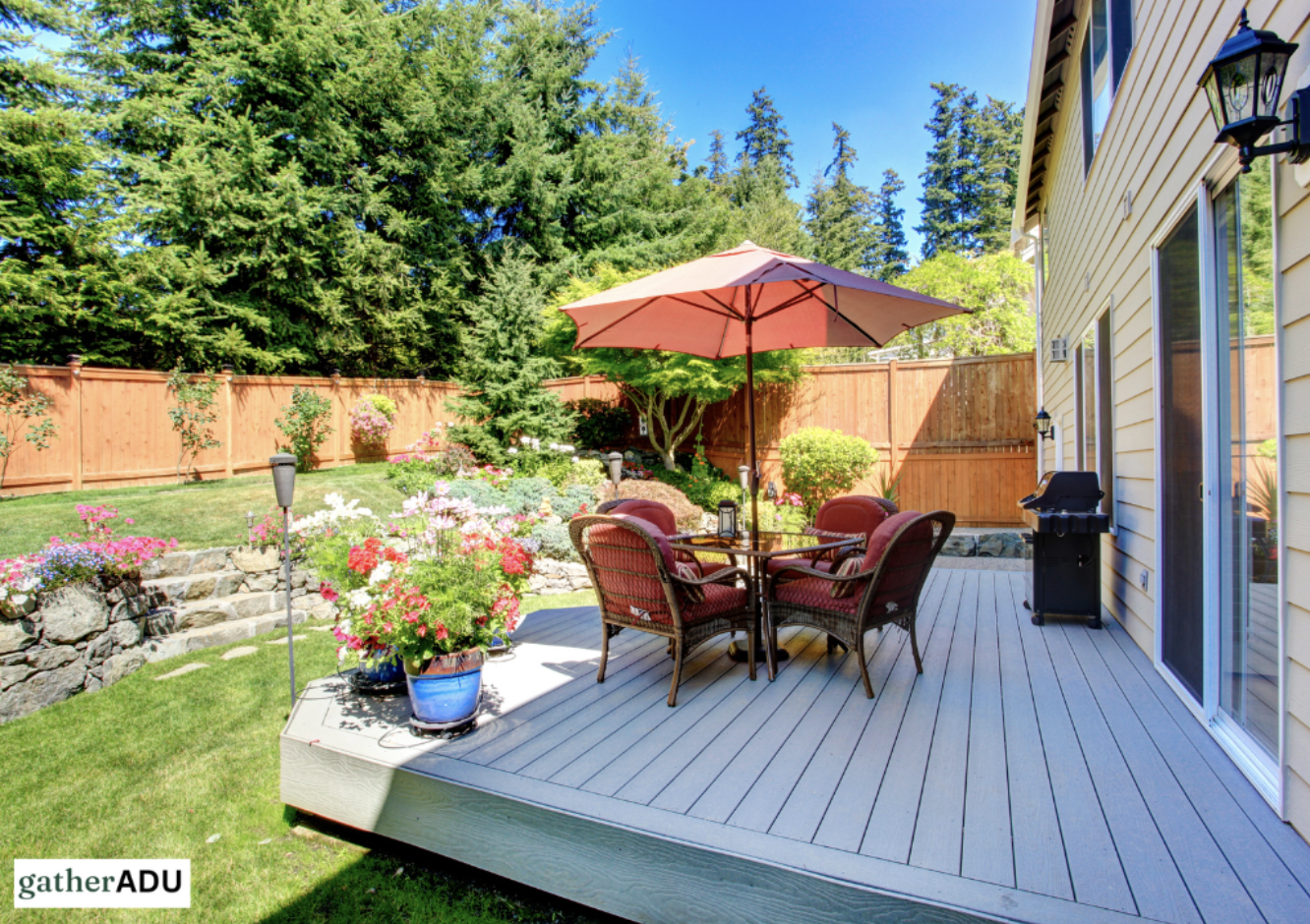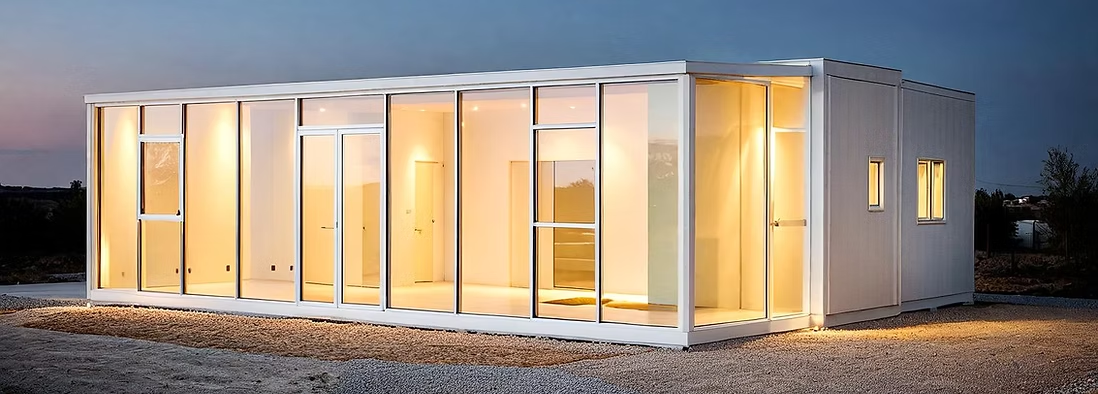If you’re a homeowner in Los Angeles looking to add extra living space to your property—whether for family, rental income, or a cozy guest suite—there’s exciting news! The city’s latest zoning guidelines, outlined in the January 23, 2025, Zoning Administration (ZA) Memo 143, have made it easier than ever to build Accessory Dwelling Units (ADUs) and Junior Accessory Dwelling Units (JADUs). One of the biggest updates? The expanded combination rules that let you mix and match these units in creative ways to maximize your property’s potential. Let’s break it down in a friendly, easy-to-understand way, so you can start dreaming about your new backyard cottage or in-home studio.
What Are ADUs and JADUs?
First, a quick refresher. An ADU is a secondary housing unit on your property, like a backyard cottage, a converted garage, or an addition to your home. It can be up to 1,200 square feet (or 800 square feet for certain state-approved designs) and includes a kitchen, bathroom, and living space. A JADU, on the other hand, is a smaller unit—up to 500 square feet—carved out within your existing or planned single-family home, often sharing a bathroom with the main house. Both are fantastic ways to add affordable housing without needing a big lot or a huge budget.
The Game-Changer: Expanded Combination Rules
The new rules in ZA Memo 143, shaped by California’s housing laws, give you more flexibility to combine ADUs and JADUs on your property. This means you can build multiple units, mix different types, and even pair them with new home construction projects. Here’s a look at the key ways you can combine these units to create the perfect setup for your needs.
1. Mix and Match on Single-Family Lots
If you own a single-family home, you’ve got some exciting options:
- One ADU + One JADU: You can add one ADU (like a detached backyard cottage or a garage conversion) and one JADU (a small unit within your home). For example, you could convert your garage into an 800-square-foot ADU for a tenant and turn a spare bedroom into a 500-square-foot JADU for a relative, complete with a mini-kitchen.
- State + City Options: You can pair a “State ADU” (one that follows California’s streamlined rules, like an 800-square-foot detached unit with minimal setbacks) with a “City Ordinance ADU” (a larger unit, up to 1,200 square feet, that follows local rules). Imagine a compact State ADU in your backyard for a home office and a spacious attached City ADU for your in-laws, all on the same lot!
These combos let you double up on housing without needing a big property, making it easier to accommodate family, generate rental income, or create a flexible space for work or guests.
2. Big Opportunities on Multifamily Lots
If your property has or will have a multifamily building (like an apartment complex), the new rules open even more doors:
- Multiple Detached ADUs: On a lot with an existing multifamily building, you can add up to eight detached ADUs (like standalone cottages), as long as the number doesn’t exceed the existing units in the building. For a proposed multifamily building, you can include up to two detached ADUs. Picture a small apartment complex with a couple of charming backyard ADUs for extra tenants.
- Attached ADUs in Non-Living Spaces: You can convert unused spaces in an existing multifamily building—think storage rooms, attics, or garages—into attached ADUs, up to 25% of the building’s units (with at least one allowed). This is a great way to turn wasted space into valuable housing.
- Mixing with City ADUs: You can combine these State ADUs with a single attached City Ordinance ADU, giving you the best of both worlds—state flexibility and local customization.
These options make multifamily properties a powerhouse for adding housing, whether you’re a landlord looking to boost rental units or a developer planning a new project.
3. Pairing with New Construction or SB 9 Projects
The new rules also let you build ADUs and JADUs alongside new homes or additions, streamlining the process:
- Build Together: You can propose an ADU or JADU at the same time as a new single-family or multifamily home, or when adding space to your existing home. For example, you could build a new duplex and include two detached ADUs in the same permit application, ensuring everything is approved together.
- SB 9 Boost: If you’re using Senate Bill 9 to create a two-unit development (like a duplex) on a single-family lot, you can add up to two detached ADUs or a mix of one attached ADU, one JADU, and one detached ADU per lot. This turns a modest lot into a mini-housing hub!
This concurrent permitting saves time and hassle, letting you plan your dream project all at once.
4. JADU Flexibility
JADUs are a special case, but they’re super versatile. You can add a JADU to almost any single-family home setup, as long as the home (or JADU) is owner-occupied (unless owned by a government agency or housing group). Pair a JADU with a detached ADU for a budget-friendly way to add two units—one inside your home and one outside—perfect for multigenerational living or a small rental.
Why These Changes Matter
These expanded combination rules are a big deal because they give you more choices and fewer barriers. Here’s why homeowners are cheering:
- More Housing on Your Lot: You can add multiple units without needing a huge property, helping address LA’s housing crunch while creating space for family or income.
- Lower Costs: State ADUs often come with relaxed rules (like no parking requirements or smaller setbacks), and combining them with City ADUs lets you optimize your budget and space.
- Streamlined Approvals: The city must approve ADU applications within 60 days, and bundling them with new construction projects simplifies the process.
- Flexibility for All Properties: Whether you have a single-family home or a multifamily building, there’s a combination that works for you.
Tips to Get Started
Ready to explore these new options? Here’s how to dive in:
- Check Your Property: Use the city’s ZIMAS tool (available online) to confirm your lot’s zoning and see what combinations are allowed. Single-family and multifamily zones are both eligible, but the rules vary slightly.
- Review Tables 1 and 2: ZA Memo 143 includes handy tables summarizing the rules for detached ADUs, attached ADUs, JADUs, and Movable Tiny Houses (MTHs). These tables (pages 19-20) break down size limits, setbacks, and combo options.
- Talk to Experts: Contact the Los Angeles Department of Building and Safety (LADBS) or City Planning for guidance. If you’re in the Coastal Zone, reach out to coastal staff (venicelcp@lacity.org) for extra permit info.
- Plan Your Combo: Decide if you want a detached ADU, an attached ADU, a JADU, or a mix. Think about your goals—rental income, family space, or a home office—and choose the combo that fits.
- Hire a Pro: Work with an architect or contractor familiar with LA’s ADU rules to design a project that meets state and city standards.
A Brighter Future for LA Housing
The expanded combination rules in ZA Memo 143 are a game-changer for Los Angeles homeowners. By making it easier to add ADUs and JADUs, the city is helping families, landlords, and developers create more housing in a way that’s affordable and practical. Whether you’re dreaming of a cozy backyard studio, a rental unit to boost your income, or a space for your grown kids to stay close, these new rules give you the freedom to make it happen.
So, grab a cup of coffee, check out those tables in ZA Memo 143, and start planning your property’s next chapter. Your perfect ADU combo is waiting!


